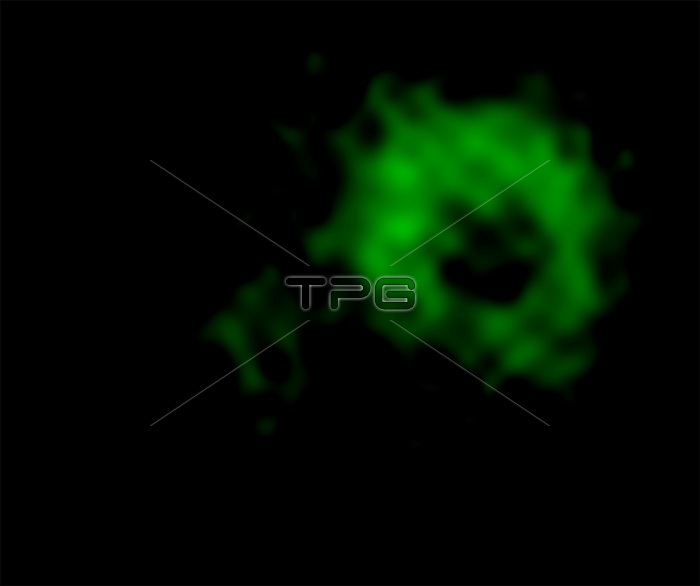
Infrared observations with NASA's Spitzer Space Telescope and ultraviolet observations with NASA's Galaxy Evolution Explorer (GALEX) have allowed estimates of the rate of star formation in the ring. These estimates, combined with the use of models for the evolution of binary stars have allowed the authors to conclude that the most intense star formation may have ended some 15 million years ago, in Earth's time frame. Arp 147, is a pair of interacting galaxies located about 430 million light years from Earth. Arp 147 contains the remnant of a spiral galaxy that collided with the elliptical galaxy. This collision has produced an expanding wave of star formation containing an abundance of massive young stars. These stars race through their evolution in a few million years or less and explode as supernovas, leaving behind neutron stars and black holes. A fraction of the neutron stars and black holes will have companion stars, and may become bright X-ray sources as they pull in matter from their companions. The nine X-ray sources scattered around the ring in Arp 147 are so bright that they must be black holes, with masses that are likely ten to twenty times that of the Sun. Release date February 9, 2011.
| px | px | dpi | = | cm | x | cm | = | MB |
Details
Creative#:
TOP22313545
Source:
達志影像
Authorization Type:
RM
Release Information:
須由TPG 完整授權
Model Release:
N/A
Property Release:
No
Right to Privacy:
No
Same folder images:

 Loading
Loading